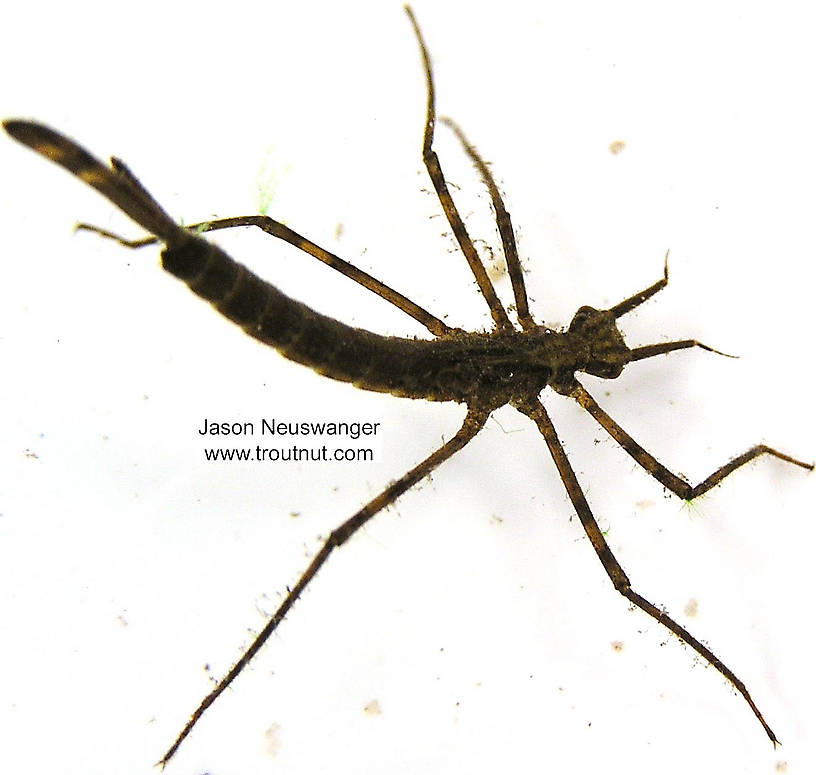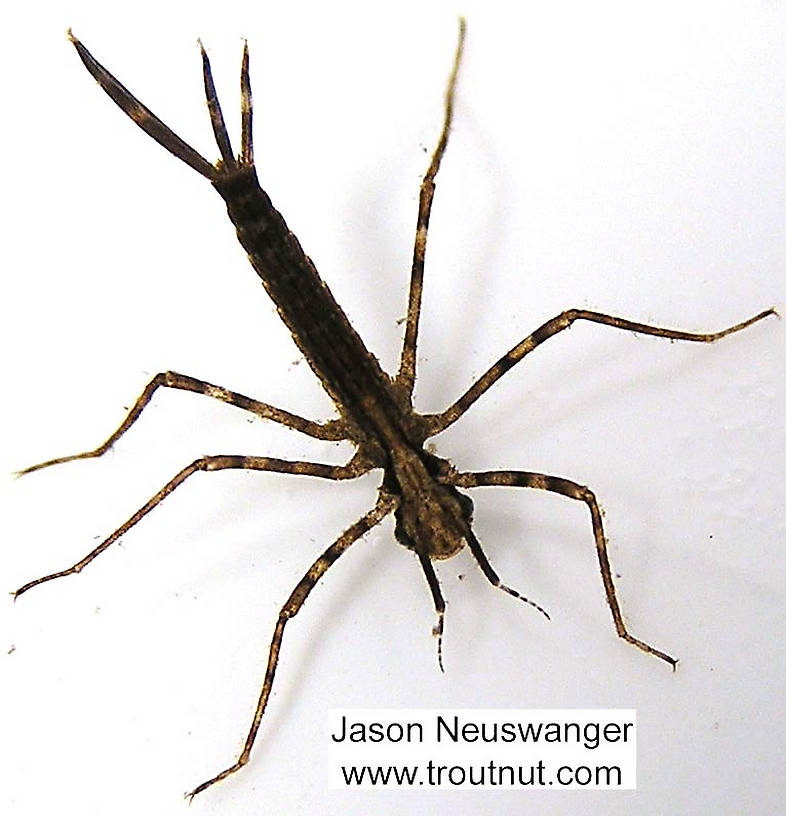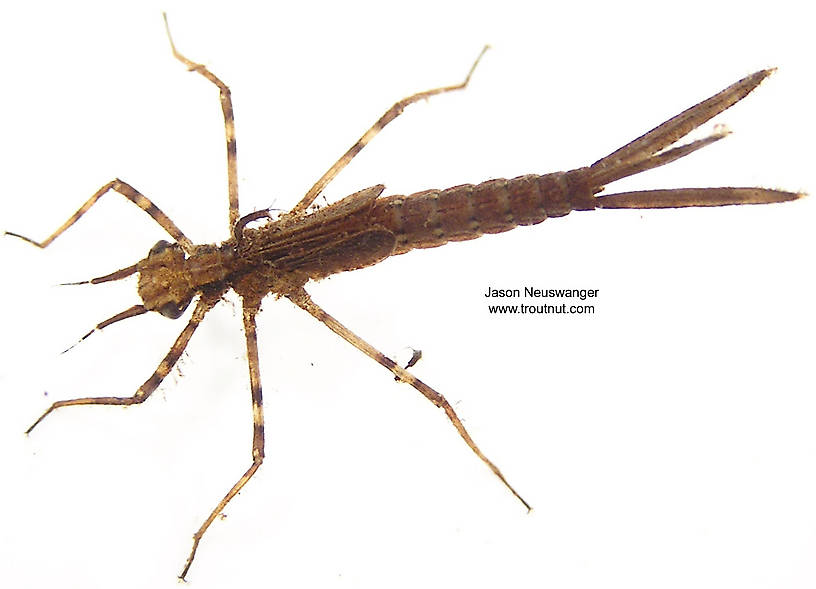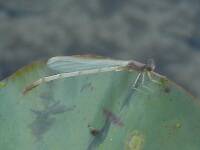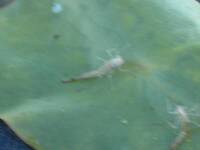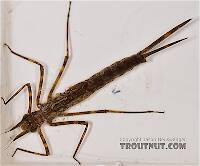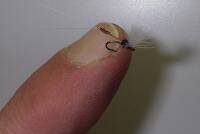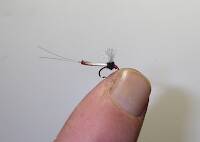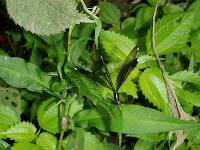
Hex Mayflies
Hexagenia limbata
The famous nocturnal Hex hatch of the Midwest (and a few other lucky locations) stirs to the surface mythically large brown trout that only touch streamers for the rest of the year.
Featured on the forum

Troutnut is a project started in 2003 by salmonid ecologist Jason "Troutnut" Neuswanger to help anglers and
fly tyers unabashedly embrace the entomological side of the sport. Learn more about Troutnut or
support the project for an enhanced experience here.
This topic is about the Insect Order Odonata-Zygoptera
Beautiful damselflies are a priceless part of a trout stream's aesthetics, but they matter little to our flyboxes. The adults are too good at flying to end up in the water where the trout can reach them very often, but their nymphs are welcome prey at times.Damselflies and dragonflies are in the same order, Odonata, but they are taxonomically separated on an obscure level not built into this site, the suborder. Damselflies are in the suborder Zygoptera, the scientific name by which they're most known. None of that will help you catch trout, but it explains what the hyphen in this page's title is all about.
Biologically, damselflies are similar to dragonflies (Odonata-Anisoptera) in most of the ways that matter to the angler.
Example specimens
Troutnut on May 29, 2007May 29th, 2007, 1:04 pm EDT
Today I was collecting nymphs in the Poconos with Gonzo when I spotted an interesting-looking spinner in the air and it landed next to us on a piece of grass. I grabbed it and tossed it in my bug box, and we both took a closer look.
It was a male spinner, perfect for identification, and it seemed to belong to a species of Ephemerella that neither of us recognized. The form was similar to invaria, more sleek than subvaria or Drunella. It was long, a big size 12 probably, but very thin. It had three long, elegant tails, and would generally have been a very photogenic mayfly.
I was looking forward to getting it under the camera and microscope to figure out what it was. But when I got home a little while ago and was looking through my bugs, it had disappeared!
Mostly.
I found a detached spinner wing of about the right size, dangling out of the mouth of a big damselfly I had added to the container. D'oh! Despite the stress of restriction to my container, and the fact that its wings were messed up, my crippled damselfly apparently hobbled its way over to my prized spinner and ate all but one wing.
It was a male spinner, perfect for identification, and it seemed to belong to a species of Ephemerella that neither of us recognized. The form was similar to invaria, more sleek than subvaria or Drunella. It was long, a big size 12 probably, but very thin. It had three long, elegant tails, and would generally have been a very photogenic mayfly.
I was looking forward to getting it under the camera and microscope to figure out what it was. But when I got home a little while ago and was looking through my bugs, it had disappeared!
Mostly.
I found a detached spinner wing of about the right size, dangling out of the mouth of a big damselfly I had added to the container. D'oh! Despite the stress of restriction to my container, and the fact that its wings were messed up, my crippled damselfly apparently hobbled its way over to my prized spinner and ate all but one wing.
Jason Neuswanger, Ph.D.
Troutnut and salmonid ecologist
Troutnut and salmonid ecologist
Troutnut on May 29, 2007May 29th, 2007, 2:05 pm EDT
And if I had a bat...
Jason Neuswanger, Ph.D.
Troutnut and salmonid ecologist
Troutnut and salmonid ecologist
IEatimago on Jun 29, 2007June 29th, 2007, 2:34 pm EDT
i wish i could photograph the bats eating emerger's on penns at dusk.
BxRxTxK on Jun 30, 2007June 30th, 2007, 4:18 pm EDT
yeah those are cool...
Litobrancha on Jul 1, 2007July 1st, 2007, 2:30 am EDT
J a good way to bring home adult odonates is in a paper triangle envelope. take a normal sized sheet of paper and divide equally into quarters... cut and keep in a dry place in your vest. when you collect an ode, take a quarter sheet and fold it to make a triangle, with the edges overlapping. stick the insect inside and fold the edges over to keep it in. you can even label the envelope. if you keep it in a safe place you can bring them back alive (crushproof and out of sun).
if you put more than one in an envelope you will likely have the same issue with them eating each other. odes tend to pull everything to their mouths which leads to shredding it.
if you put more than one in an envelope you will likely have the same issue with them eating each other. odes tend to pull everything to their mouths which leads to shredding it.
Quick Reply
Related Discussions
Topic
Replies
Last Reply
Re: Not caught on a fly rod, but how shall we catch this on a fly rod???
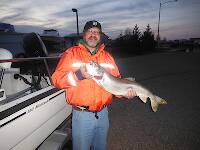
In the Photography Board by Jmd123

In the Photography Board by Jmd123
7
May 17, 2015
by Partsman
by Partsman
1
Jul 11, 2008
by Taxon
by Taxon
7
Mar 30, 2013
by Gutcutter
by Gutcutter



